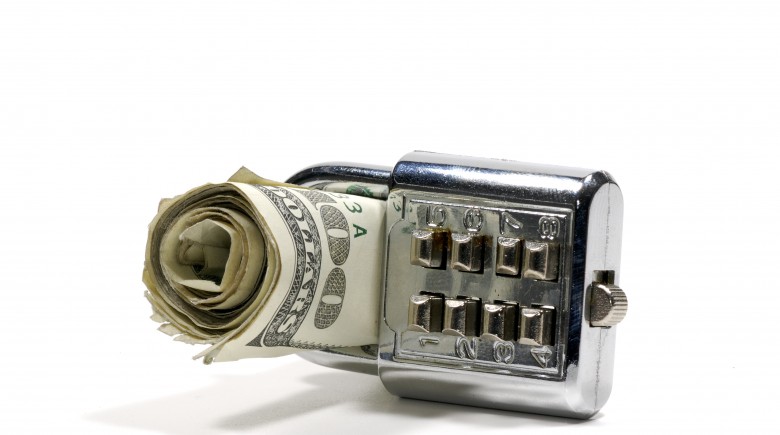Suddenly it feels like 2008 could happen all over again in your IRA. A quick glance at your statement may have you in worried mode again. All of the news seems bad and with the debt ceiling fight and Obamacare looming, it doesn’t appear that the sun is going to be coming out any time soon. Without diving too deeply into cliché it may be time to use this as an opportunity. Almost everybody got a little too complacent with their retirement money five years ago with results, that in many cases, were horrendous. Now, after all this time you may be breakeven and possibly in the black. Of course, there were many fits and starts, and some people got out of the markets at the bottom, only to reinvest long after the rallies began. Wherever you fall in the investment spectrum, now may be the perfect time to reassess.
The litany of bad news needs no rehashing here, as most are all too familiar with it. But, regardless of the news of the day, it is incontrovertible fact that no one knows where the next leg of the stock or bond markets will go. And one thing that most of us know for sure is that we don’t want to take the same amount of losses (as temporary as they might be) as in 2008/2009. With that in mind it is still paramount that one looks over their portfolio in as cold and calculating a way as possible. With retirement money it is often instinctive to be a bit more conservative than with other investments. And considering that we are all five years older than we were since the last terrifying bear market, that instinct may be stronger than ever.
As with all investing, it is important to have a rational plan and stick to it as closely as possible. If you feel that a 50% split between stocks and bonds (and cash) is a good thing for your situation, then it is highly probable that still applies. And while cash is not always a great plan in IRAs and 401ks (depending on one’s circumstances as always), it is also an integral component of everyone’s overall plan. Shorter term, high quality bonds (often called cash equivalents or just cash) may be a way to go with some of your portfolio. With both bonds and stocks having made enormous runs these last few years it may be a good idea to take a step back from your plan and make some adjustments.
If both of those assets get hit hard how does your situation hold up? While, generally speaking a nice portfolio of stocks and bonds is a good idea, let’s not forget downsides. The whole idea of every investment plan (almost every) is to take a little money off the table as assets skyrocket. Conversely, as they get hit, it is almost always prudent to add money. Of course in reality, that is very difficult to execute as was evident when hardly anyone was adding to their stock portfolio in 2009. And it is almost as hard to take money out of stocks as they rise. It is (and was) natural to want to break even on the losses of 2009, just as it is to want to finally make some good profits. But, sometimes it’s also a good idea to count your blessings and take some money off the table regardless of profitability. Every plan has a cash (or cash equivalents) section in it. Have you been adding to that pile as both bonds and stocks have risen? If not, then you are not really sticking to your plan, even if you have followed all the rest of it. Yes, it’s true, no one knows the future, but that is the whole point. This time, have your full amount of cash on the sidelines in case of a bear market.
Suddenly it feels like 2008 could happen all over again in your IRA. A quick glance at your statement may have you in worried mode again. All of the news seems bad and with the debt ceiling fight and Obamacare looming, it doesn’t appear that the sun is going to be coming out any time soon. Without diving too deeply into cliché it may be time to use this as an opportunity. Almost everybody got a little too complacent with their retirement money five years ago with results, that in many cases, were horrendous. Now, after all this time you may be breakeven and possibly in the black. Of course, there were many fits and starts, and some people got out of the markets at the bottom, only to reinvest long after the rallies began. Wherever you fall in the investment spectrum, now may be the perfect time to reassess.
The litany of bad news needs no rehashing here, as most are all too familiar with it. But, regardless of the news of the day, it is incontrovertible fact that no one knows where the next leg of the stock or bond markets will go. And one thing that most of us know for sure is that we don’t want to take the same amount of losses (as temporary as they might be) as in 2008/2009. With that in mind it is still paramount that one looks over their portfolio in as cold and calculating a way as possible. With retirement money it is often instinctive to be a bit more conservative than with other investments. And considering that we are all five years older than we were since the last terrifying bear market, that instinct may be stronger than ever.
As with all investing, it is important to have a rational plan and stick to it as closely as possible. If you feel that a 50% split between stocks and bonds (and cash) is a good thing for your situation, then it is highly probable that still applies. And while cash is not always a great plan in IRAs and 401ks (depending on one’s circumstances as always), it is also an integral component of everyone’s overall plan. Shorter term, high quality bonds (often called cash equivalents or just cash) may be a way to go with some of your portfolio. With both bonds and stocks having made enormous runs these last few years it may be a good idea to take a step back from your plan and make some adjustments.
If both of those assets get hit hard how does your situation hold up? While, generally speaking a nice portfolio of stocks and bonds is a good idea, let’s not forget downsides. The whole idea of every investment plan (almost every) is to take a little money off the table as assets skyrocket. Conversely, as they get hit, it is almost always prudent to add money. Of course in reality, that is very difficult to execute as was evident when hardly anyone was adding to their stock portfolio in 2009. And it is almost as hard to take money out of stocks as they rise. It is (and was) natural to want to break even on the losses of 2009, just as it is to want to finally make some good profits. But, sometimes it’s also a good idea to count your blessings and take some money off the table regardless of profitability. Every plan has a cash (or cash equivalents) section in it. Have you been adding to that pile as both bonds and stocks have risen? If not, then you are not really sticking to your plan, even if you have followed all the rest of it. Yes, it’s true, no one knows the future, but that is the whole point. This time, have your full amount of cash on the sidelines in case of a bear market.







